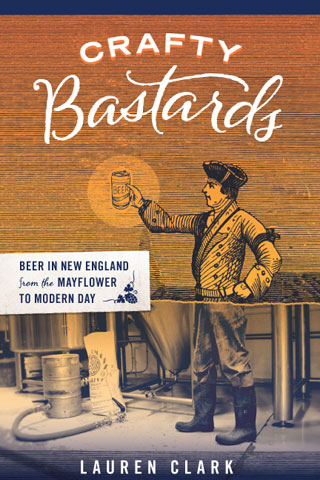October 31st, 2010
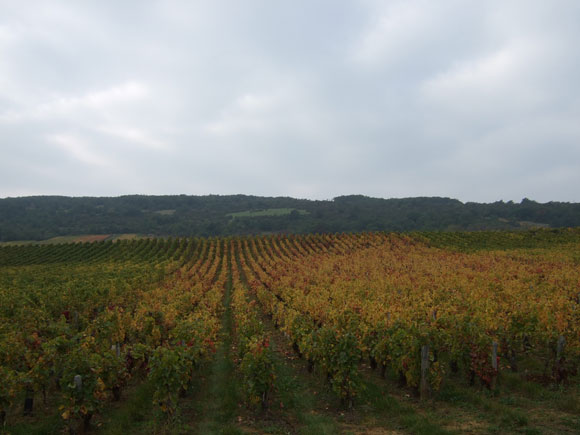
I was in Burgundy for all of five minutes before I began plotting how I could move there for a few years, holing up in a little village with well-pruned grape vines and a Romanesque cathedral, drinking delicious, affordable bottles of some of the world’s best wine, eating pungent, oozy epoisse cheese after multi-course, farm-to-table lunches. The whole farm-to-table thing just happens naturally in the Burgundian countryside. They don’t make a big deal out of it. Another thing that happens: pastis (for about $2.50 a glass) with your morning coffee. How could I not embrace that civilized tradition?
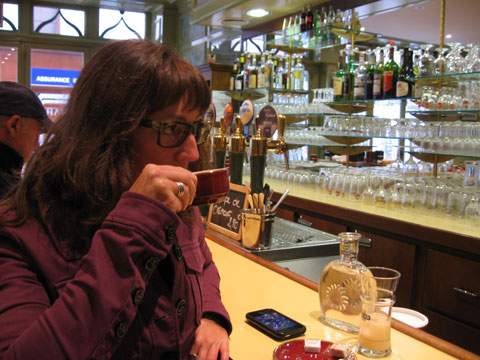
Here’s proof of me enjoying a nice belt of the licorice-y national beverage at about 11:00 a.m. in the beautiful, medieval city of Cluny. Cluny was once the center of western monasticism and boasted the second-largest cathedral after St. Peter’s in Rome before the building was destroyed during the French Revolution.

Yep, the dude in the little white truck is guiding his flock of sheep into their pen at the end of a day of grazing.
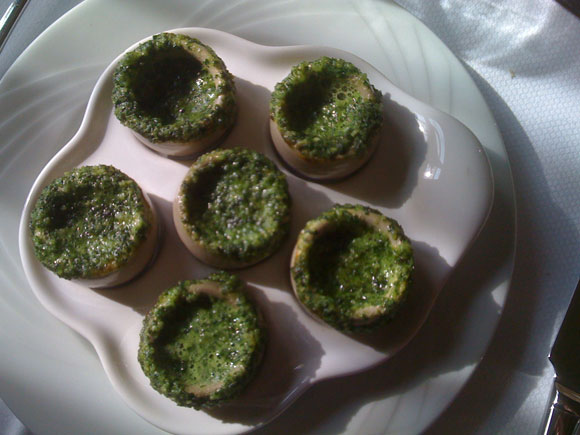
If you go to Burgundy and don’t order escargots, go directly to jail. Plump snails bathed in butter, garlic and herbs — with a carafe of the house white, which will not cost you much and will be as solidly structured as the 11th-century stone cathedral across the street.
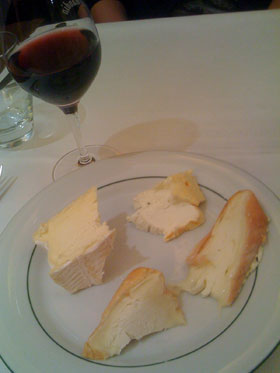
Another Burgundian delicacy that it is against the law not to eat as often as possible: epoisse, the local washed-rind cheese (washed in marc, the local unaged brandy, akin to grappa). When it’s perfectly ripe, it oozes out of its rind like honey. Stinky in the most wholesome possible sense. This photo was taken in Beaune, the capital of the Burgundy wine trade, where a well-dressed representative of that trade, just back from Japan, shared some of his Sancerre with us.
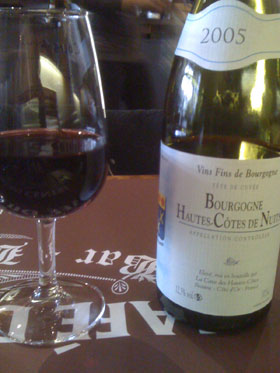
Oh, hi. Another kick-ass bottle of Burgundy. This was in a totally ho-hum-looking cafe in the town of Nuits-Saint-Georges where, like a good tourist, I ordered the Boeuf Bourguignon. They did not phone it in — it was luscious. This memorable lunch cost about $18.
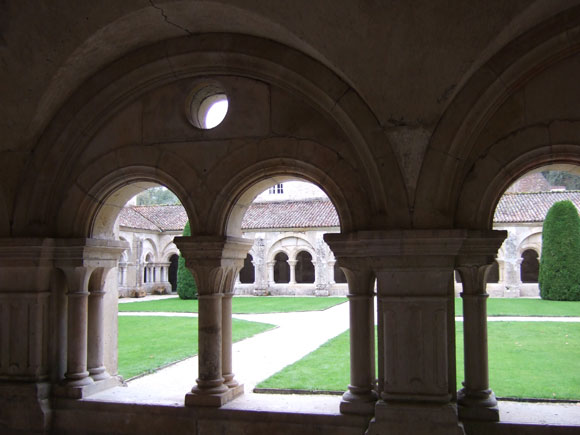
On the way to Paris, we stopped at the stunning Fontenay Abbey. It was established by St. Bernard of Clairvaux, founder of the austere Cistercian order, in 1118. This is a view from the cloister.
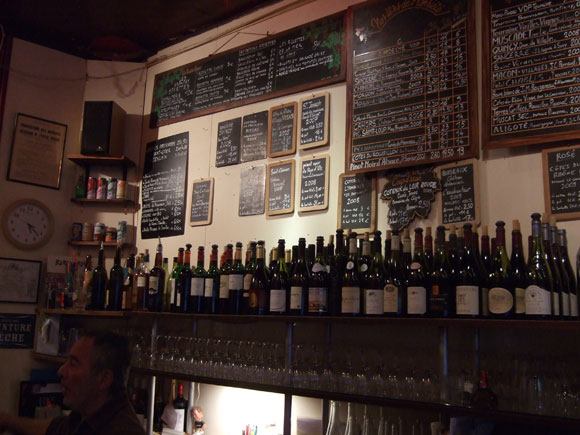
Le Baron Rouge (the Red Baron) is one of those “hidden gems” that was outed a while ago by savvy Paris travelers, so I’m not going to feel too bad about writing it up. You can see above the riches to be found on its chalkboard menu. Also, one of its walls is adorned with wood casks from which you can fill a liter of wine to bring home for short money (i.e. about $5!). It was very quiet the day I visited, but I heard that Sunday afternoons are crowded with patrons enjoying really good wine and charcuterie without the tourist mark-up.
By far my biggest splurge while in Paris was at the fabled Hemingway Bar at the Ritz Hotel, located in the elegant Place Vendome. There I drank a $41 Manhattan with some fellow American ladies of the international cocktail scene: ex-pats Forest Collins, who works on tsunami-warning logistics for the U.N. and writes the 52 Martinis blog, and burlesque performer Gentry Lane; plus Vivienne VaVoom, another burlesque performer who was visiting from Denver. Yes, that’s more than I paid for most of my multi-course meals in Burgundy. But the head-spinning journey from drinking pastis in anonymous village cafes with a bunch of old guys to drinking cocktails in one of the most celebrated bars in the western world with a tsunami expert and two striptease artists? Priceless.
Tags: Burgundy, Cluny, Hemingway Bar, Le Baron Rouge, Paris, pastis
Posted in France, Wine | Comments Off on I drank France – part 2
October 24th, 2010
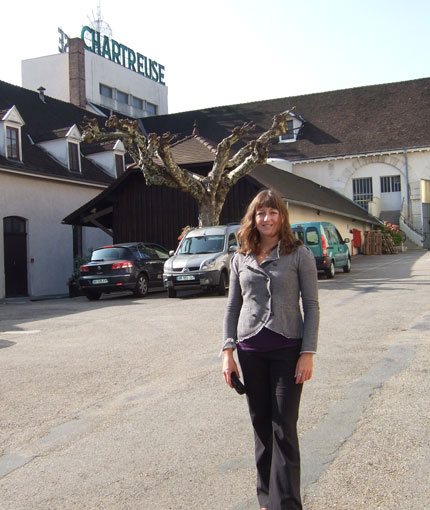
The Great October Strike of 2010 hadn’t begun yet when I flew into Paris on the morning of the 11th, so I was able to catch a super-speedy-smooth TGV train to Lyon right away. I would spend the night there en route to the distillery at the foot of the French Alps that produces the venerable herbal liqueur Chartreuse.

France’s second-largest city after Paris, Lyon is situated amid the comely geography of the Rhone and Saone rivers. I checked into the groovy Hotelo near the Rhone side of things and wandered across the city to the Saone side — the oldest part of the city. I did the mandatory climb up an endless set of stairs for a view of the Lyon Cathedral and its plaza, then rewarded myself with a La Chouffe Belgian ale at an outdoor cafe in said plaza. Right then it was official — I was on vacation in France!
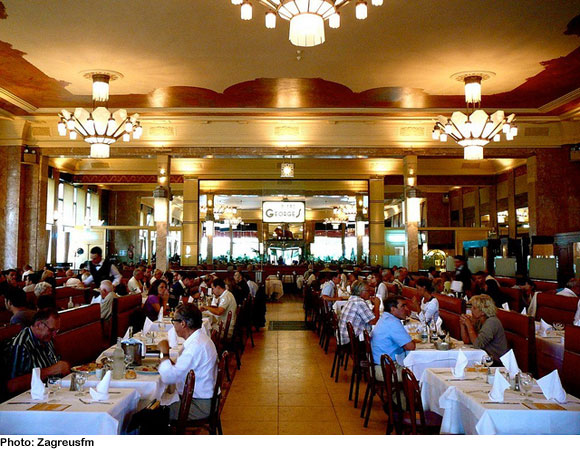
A cab driver suggested I check out Brasserie Georges for dinner. Its largeness and big neon sign (albeit in cool, Art Deco lettering) gave me pause — this place has as much chance of being really cheesy as being really good, I thought. But it was conveniently located right across the street from my hotel… The verdict: really good. Brasserie Georges is a real brasserie, i.e. beer is brewed on the premises. I ordered a slightly cloudy, dry Belgian-style amber and enjoyed the hustle and bustle, the hearty regional fare (calf’s-foot and lentil salad, anyone?) and the swift, sure service that all characterize a good, urban brasserie. If you’re ever in Lyon, it’s well worth checking out.

The next day was the first official day of the strike, but, blessedly, the train to Voiron managed to roll out of the station. I got there just in time to meet my tour guide from Chartreuse, the gracious and multi-lingual Florence Donnier-Blanc. The distillery and its cellars receive hundreds of thousands of visitors each year. She showed me around the cellar, informing me that it is the largest liqueur cellar in the world. Two million liters of green and yellow Chartreuse rest there in oak casks the size of Humvees. Many of these casks, whose wood comes primarily from Russia and Hungary, are 100 years old. (Oh, the herbaceous aroma of that aging liqueur!)

You may have heard that only two brothers of the Carthusian Order — the 900-year-old monastic order that created its “elixir of long life” in 1737 — know the recipe for Chartreuse, which in the green variety involves 130 different botanicals. But those two monks, with one helper, are also responsible for producing the entire world’s supply — in part using small, copper pot stills that are 200 years old. Now that is god’s work.

It was a treat to sample some special-edition bottles of Chartreuse unavailable in the U.S., including a version of yellow Chartreuse made in partnership with some of France’s noted sommeliers and a version of the green called 1605, an homage to the birthday of the original recipe for the elixir that was perfected 132 years later. The 1605 is an enchantingly dry-ish sibling of the standard green Chartreuse. The brothers also produce a line of berry liqueurs that just cry out for sparkling wine and aromatic Alpine specialties like Genepi (which smells similar to Chartreuse and is made from flowers that only grow in the Alps) and La Gentiane (similar to France’s famous yellow, bitter liqueur Suze). The distillery’s tasting room boasts eye-catching displays of vintage Chartreuse, as well as various “imposter” bottles whose liquid is frighteningly Nyquil-colored.

Next, Florence and I hopped in one of the distillery’s Chartreuse-mobiles and made the scenic, winding drive up to the mountains…
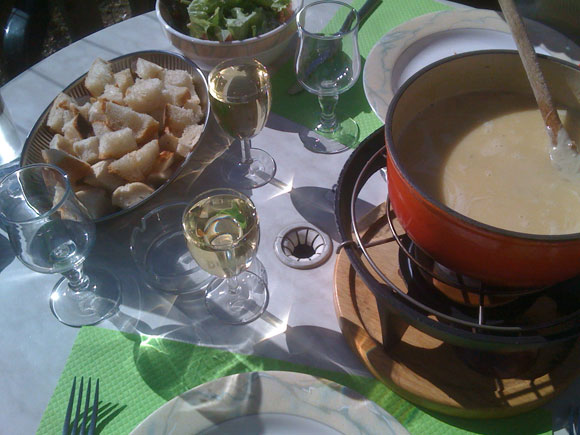
…for a lunch of fondue and white wine at a cute, little auberge frequented by hikers and skiiers. It was a ridiculously gorgeous day as we sat there enjoying the view of Chamechaude, the highest peak in the Chartreuse range of the Alps. (Florence insisted that Paramount Pictures nabbed this peak for its logo.)
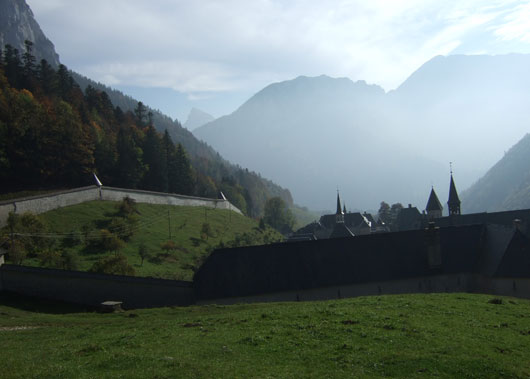
After lunch we drove to the site of La Grande Chartreuse — the main monastery of the Carthusian Order, which has existed on that site since 1084. The lower house of the monastery houses a museum, the other (above), a short hike away, houses the hermitage where the brothers live. We took in the view of the hermitage on a little hill bearing a crucifix and waxed philosophical about religion, family and life in general. In the woods below, we spied the occasional white-robed monk walking slowly, contemplatively. Labor strikes and other worldly turmoil seemed very far away.

Tags: Carthusian Order, chartreuse, French Alps, Lyon, monks, Voiron
Posted in France, Liqueur | 4 Comments »


















